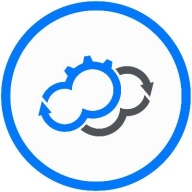

CloudBolt and Cloudify compete in the cloud management platform space. Cloudify holds an upper hand due to its robust features and adaptability.
Features: CloudBolt provides extensive automation capabilities, self-service IT management, and integrates seamlessly across multiple cloud providers, proving advantageous for enterprise solutions. Cloudify offers open-source orchestration, advanced workflow automation, and adaptability across various infrastructures, allowing for greater flexibility and customization.
Room for Improvement: CloudBolt could enhance its user interface and expand its open-source offerings while refining cloud provider integration further. Cloudify might benefit from simplifying its deployment process, improving out-of-the-box support, and making its pricing structure more transparent.
Ease of Deployment and Customer Service: CloudBolt facilitates straightforward deployment with centralized management complemented by responsive customer service. Cloudify requires more technical expertise during deployment but supports complex multi-cloud setups with extensive community and documentation resources.
Pricing and ROI: CloudBolt's pricing is more predictable, appealing to businesses looking for cost-effective solutions. While Cloudify's upfront costs are higher, it offers a potentially higher ROI through its capability to manage intricate orchestration tasks.
| Product | Market Share (%) |
|---|---|
| CloudBolt | 2.5% |
| Cloudify | 1.8% |
| Other | 95.7% |


| Company Size | Count |
|---|---|
| Small Business | 3 |
| Midsize Enterprise | 1 |
| Large Enterprise | 6 |
| Company Size | Count |
|---|---|
| Small Business | 3 |
| Large Enterprise | 6 |
CloudBolt supports a variety of cloud technologies, from on-premises virtualization and private cloud to a wide range public and hybrid cloud configurations.
No need to rip-and-replace. CloudBolt provides easy import, syncing, and management of legacy deployments even as it helps you build out new cloud environments.
CloudBolt lets administrators create and maintain configuration standards while developing a reusable library of service and application templates.
Cloudify is an open-source orchestration-first cloud management platform. The solution allows applications to efficiently run across multiple cloud or data center platforms for premium multi-cloud infrastructure automation and orchestration. It provides infrastructure automation using environment as a service (EaaS) technology to deploy and continuously manage any cloud, private data center, or Kubernetes service from one central point while leveraging existing toolchains.
Cloudify Product Highlights
Cloudify Features
Cloudify has many valuable key features. Some of the most useful ones include:
Cloudify Benefits
There are many benefits to implementing Cloudify. Some of the biggest advantages the solution offers include:
We monitor all Cloud Management reviews to prevent fraudulent reviews and keep review quality high. We do not post reviews by company employees or direct competitors. We validate each review for authenticity via cross-reference with LinkedIn, and personal follow-up with the reviewer when necessary.